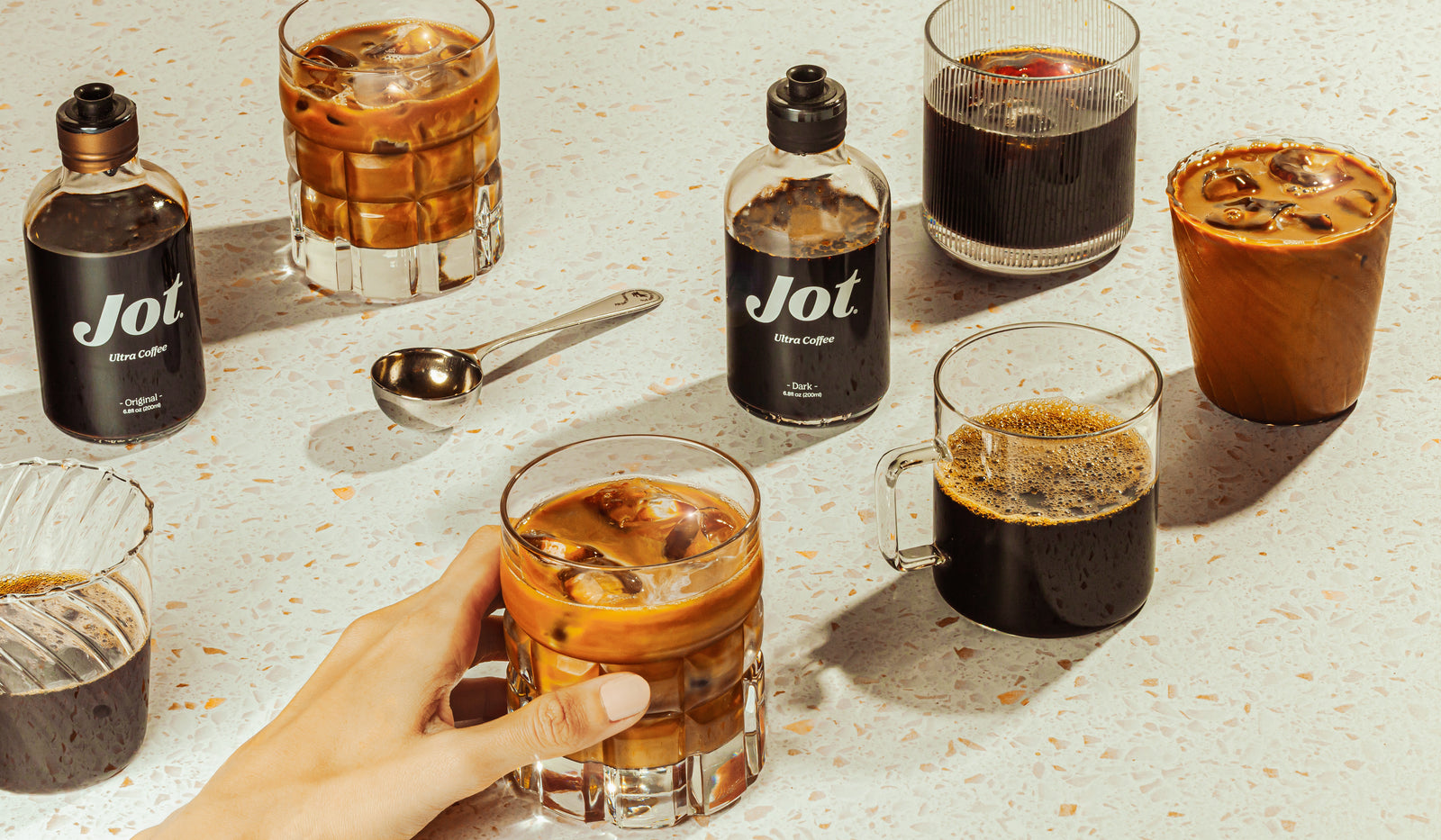In our Inspiration Fuel series, we interview writers, artists, entrepreneurs, musicians, and everyday heroes to learn how they manage the ebbs and flows of motivation and inspiration in the pursuit of their life’s callings.
Artist and illustrator Libby VanderPloeg has a special knack for visual storytelling. Her style is strikingly simple, but within it, she has a remarkable ability to capture complex moods and rich scenes with depth and dynamism, using only the subtlest gestures – a touch of movement, the arch of a brow.
Libby's work is bright and joyful, a celebration of community, nature, and the special magic in quiet moments. For this edition of Inspiration Fuel, I reached out to Libby to get some insight into the origins of her unique powers of observation and how she keeps her creative tools so sharp.
*****
I’ve been a huge fan of yours ever since happening across some illustrations you did for the Brooklyn community site Greenpointers many years ago. What I’ve always admired about your work is that it has a very deceptive simplicity. Your drawings of people, especially, are so spare but, at the same time, so full of joy and place and movement. It’s absolutely magical what you’re able to do with simple colors and a few lines. For our readers who may not have come across you or your work yet, how would you introduce yourself and describe the art that you make?
Thank you so much for the kind words! Introductions can be so challenging, especially when your path is scribbly, as I feel mine is. I’m an artist and illustrator, and these days I call Michigan my home.

Before moving back to Grand Rapids (where I grew up) in 2017, I lived in Chicago and then Brooklyn, where I honed my skills as an artist, designer, and illustrator.
I’ve always loved playing with color and characters, and creating whimsical worlds that celebrate inclusivity, community, and simple pleasures.

What are some all-time favorite projects or specific pieces that you’ve worked on?
It’s so hard to pick because I think it probably changes with the seasons, but my current favorite project is a book that I spent several years illustrating called A History of the World in 25 Cities, written by Tracy Turner and Andrew Donkin, and published by Nosy Crow in collaboration with The British Museum.

The book tells the stories of 25 cities through maps and other illustrations portraying pivotal points in the history of human civilization.

It’s hard to sum up the joy I felt when I finally got to hold this book in my hands! And it was especially rewarding to see it shortlisted for Waterstones 2021 Book of the Year.

How did you first get into art and design? Was there a specific moment when you realized that this work might become a calling for you?
I was lucky to have parents that fostered my artistic inclinations. I took my first drawing class when I was 7 years old – Animal Drawing.

I vividly remember the thrill of having a stranger after class tell me they liked my drawing. I suddenly felt like maybe I had a little something special about me. And it meant a lot that someone other than my parents enjoyed what I had created. I loved drawing until that point, but from then on it was my passion!

When I think back, I know that as a child I wanted to be an illustrator, but the practical, life-planning part of me didn’t believe it was something I could really achieve. I worked for a long time as a graphic designer, web designer, and art director, which gave me occasional opportunities to make spot illustrations for projects – always a treat.
But it took actually getting laid off from a magazine I was working at to start to kick me into dream-chasing mode. After that, I started my aforementioned illustrated recipe column for Greenpointers, and illustration assignments started trickling in, remarkably.

After a few months of a slow drip of work, I took another full-time design job for a year, but during that year the slow-drip grew into what was starting to feel like a second-shift job. I was working day and night, so I decided to quit my day job and really go for it. I didn’t look back!

For most of us who are not in creative professions, it’s our creative hobbies that help us recover and revive; they’re the “play” that balances the “work.” But is that harder with a creative career? How do you “play”?
It’s absolutely confusing at times to have a job doing what you love, and I have many times asked myself if this is a good idea because it can make burn out a very real possibility.
I think it’s so important to dabble in lots of different hobbies that bring you joy so that you don’t start to resent the thing you love doing.
I love to cook and work on food experiments, like sourdough, and I am obsessed with gardening which I only started doing a few years ago.

There is so much to learn about growing plants, and when the weather warms up I can’t help but play in the garden several times a day – moving plants, adding plants, checking on plants.
And I take lots of little walks everyday with my dog, Tucker, for fresh air and decompression. Since so much of the professional creative work that I do is screen-based, it’s really important to me to spend a lot of my play time disconnected from the digital world.
There’s a lot of talk about “flow” states, but many artists say that even their good creative sessions feel like hard work. For you, what does your ideal creative state feel like?
I think my ideal creative state occurs when I’ve got the idea in my head and I’m so excited about creating that thing that I can’t stop until it’s done.
I can’t really talk to anyone when I’m in this state. I’ve got music or a podcast playing, or it could be dead quiet for hours without me realizing it because I’m so focused on the work. It’s a drive to bring something to life, to get the idea out of your head, to try to figure out the craft. It’s really a high, and it can be hard to go work on spreadsheets or something when you want to chase that feeling.

Can inspiration be manufactured? If so, how do you do it? And, if not, where do you think it comes from?
I would say that inspiration can be discovered, even when it seems out of reach. But just like everything, supplies will ebb and flow.
I think you have to be okay with moments where you feel like you’re stuck or have plateaued, and take those moments to absorb and embrace ideas and feelings. Keep notes of observations.
Giving your brain time away from creative production is essential for future inspired moments!
I really liked something you said in the interview you did when you were named to the Create & Cultivate 100 List. You described creative progress as: “look at what we’ve finished, critique, learn, and strive to do better next time.” But, self-critique can be a tricky step for artists. It can either lead you forward or drag you back. Do you have any strategies or techniques for making sure that self-critique doesn’t devolve into self-criticism?
According to NASA, “There are more stars than grains of sand on all of Earth’s beaches combined.” It’s really hard to keep perspective sometimes, but when I find myself ruminating on the things I don’t like about myself or my work, I try to keep in mind that I’m a tiny speck on a tiny (but beautiful and wonderful) planet in a great, big universe and that the weight of what I’m worried about might not be worthy of such fixation.
In my moments of self-criticism, fresh air or a change of scenery can be a nice little reset. Sometimes it feels a lot easier to sit with a bunch of little worries than to set them aside and move forward into the unknown.
But it’s an important practice to be able to shift gears rather than spin your wheels. Accepting that we are all imperfect is essential for letting joy in. And given that we only have one life, I think we might all want to allow for more joy.
There are lots of us who struggle to maintain enthusiasm for the work or projects that we love, even if we feel a calling to pursue them. What advice would you give for dealing with dark days when there’s just no motivation to be found?
Watch cute animal videos, as I think they are healing. They might not help get the work done, but they will help with the mood!

As far as practical advice, I have a lot of things that I need to do work-wise, but just don’t feel excited about doing. So I think that surrounding yourself with pleasant things you love – a cup of coffee, some aromatic tea, a cozy blanket, some calming (but not distracting) music – can help bring a little pleasure and focus to tasks that would otherwise lack delightfulness.
It kind of is the little things in this case.
And, finally, how do you take your coffee?
If brewing at home, I take it black! If at the cafe, I love an oat milk latte! Did I mention that I started drinking coffee when I was 7? Back then, lots of spoonfuls of sugar!
*****
We’re always on the lookout for more artists, creatives, entrepreneurs, and everyday heroes to interview for our Inspiration Fuel series. If someone you know is pursuing their life’s calling in a way that inspires you, tell us about them by emailing: adam@jot.co.
All images courtesy of Libby VanderPloeg. Portrait by Leigh Ann Cobb Photography.









